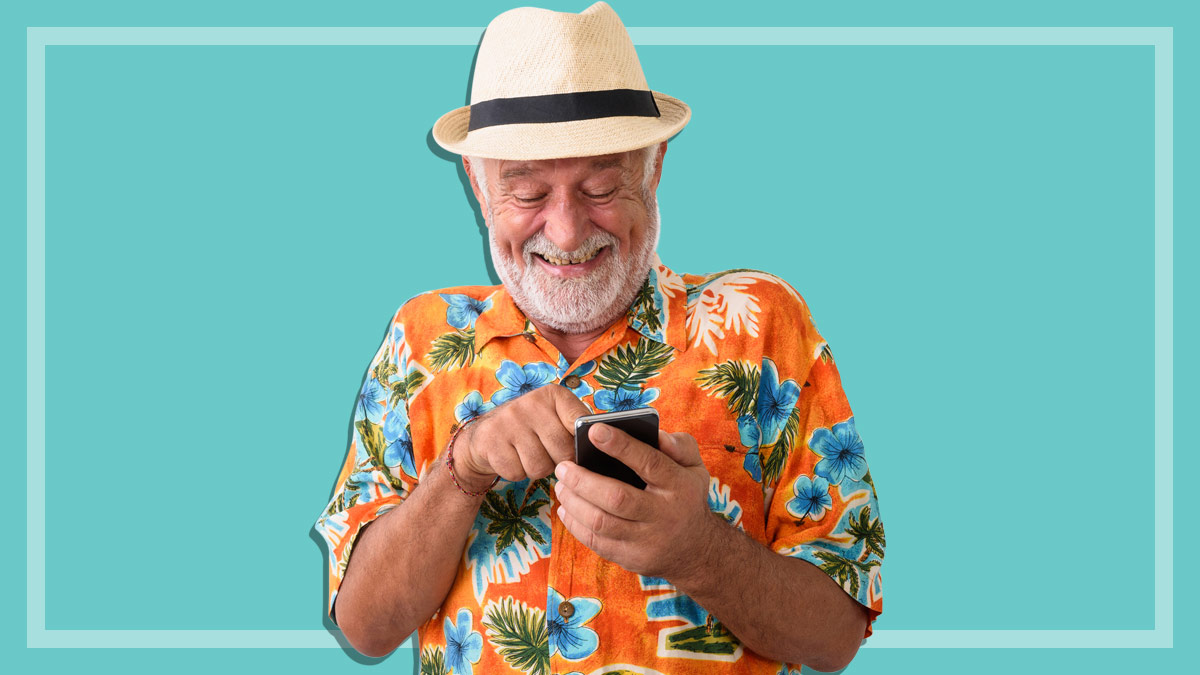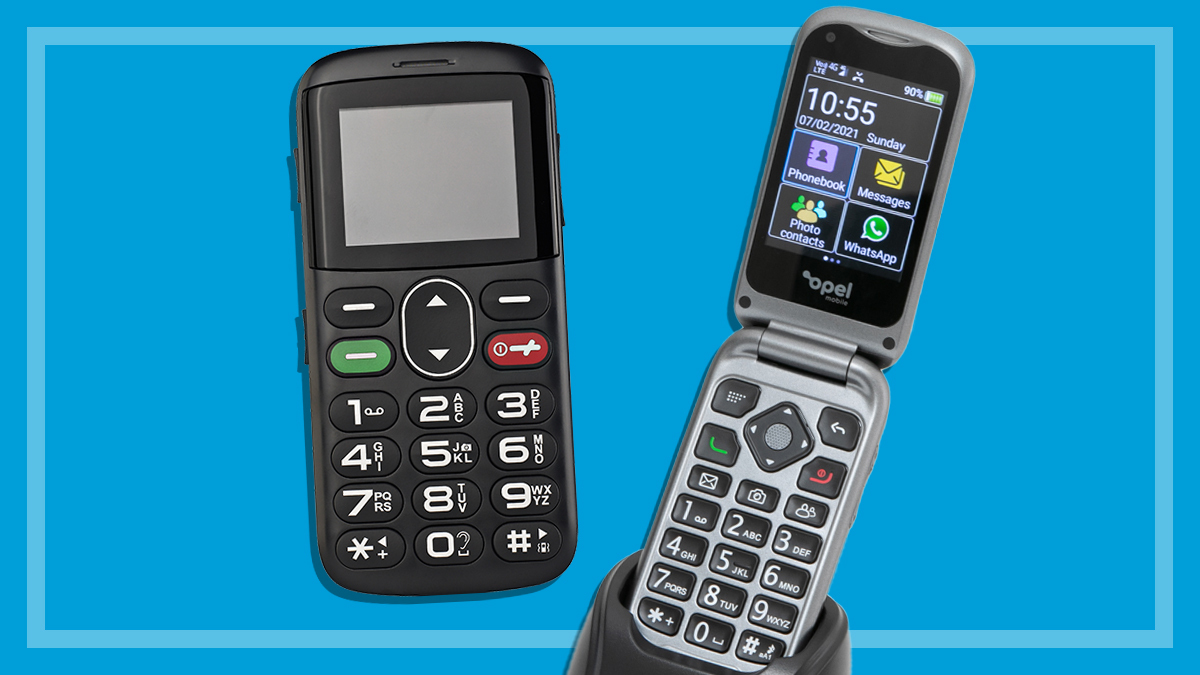Get our independent lab tests, expert reviews and honest advice.
How to find the best mobile phone for seniors and kids

For many of us, smartphones with all the bells and whistles are a crucial part of our daily lives. But what if you just want a mobile for yourself or a family member (young or old) that’s simple to use, easy to navigate and lets you make a quick call in times of stress?
On this page:
- How do phones for seniors or simple phones work?
- What should you look for in a phone for seniors?
- Can you use a hearing aid with your phone?
- Should you consider a low-cost smartphone?
- Can you use QR or tap check-in on a simple mobile?
- How to recycle an old simple mobile phone
There are several options available when looking for a mobile for people with low vision, people who are hard of hearing, or people who’d simply prefer a talk and text device over the latest Samsung Galaxy or Apple iPhone. You might also be surprised at the ability of some of the more popular smartphones to provide useful assistance to seniors.
How do phones for seniors or simple phones work?
Simple mobile phones strip most things back to the bare essentials, and typically do away with touchscreens. Because of this they tend to have:
- a retro, simple design
- clear navigation tools and menus
- a far lower price point (generally) compared to most smartphones.
In fact, a number of models in our test fall below the $100 mark.
They’re often marketed as phones for seniors, which some manufacturers embrace. Many models include:
- large buttons
- limited vision settings (e.g. large text)
- support for people with reduced or limited hearing, including louder volume options and hearing aid connectivity.
They could also be a useful option if you, or someone you know, lives with disability or limited dexterity.
A smartphone alternative for school-aged kids
A number of schools don’t allow smartphones as they can get damaged or stolen and are seen as a distraction. But simple mobile phones may be permitted for quick communication with parents and guardians. Despite being marketed as ‘for seniors’, simple phones like this can be a good option for young school-aged children (and it will certainly sting less if your child misplaces or damages a $100 phone compared to a $1000 one).
What should you look for in a phone for seniors?
Firstly, you’ll need to confirm that the phone you’re going to buy is at least a 4G mobile. Telstra has announced that it will be shutting down the 3G network for mobile phone use (talk and texting) in the latter half of 2024, so if you want to keep your phone longer than a year, you’ll need one that supports 4G networks.
Locked and unlocked phones
Over the years, many CHOICE readers have asked, “Why do phone networks lock my phone and how can I unlock it?” This was a very important issue several years ago as Telstra, Vodafone and Optus locked many of their post-paid (monthly plan) mobiles and most of their pre-paid (pay as you use) mobiles.
However, if you’re using anything newer than an iPhone 5 (or even an iPhone 4/4S where you’re running something more recent than iOS 7), your phone will be unlocked and can be used on any network.
If you’ve still got a hand-me-down iPhone 3G/3GS and an older operating system (before iOS 7), then perform a restore in iTunes. If you’re not sure how to do this, check with a friend or family member who enjoys doing ‘tech’ stuff. As this mobile doesn’t have 4G support, it’s useless as a mobile now anyway, but could still make a good iPod-style music player.
For more on unlocking your old phone or getting your pre-paid mobile unlocked, check out the support pages for Optus, Telstra and Vodafone.
You should also keep an eye out for these features:
- Desktop charging cradle: A dedicated charger removes the need to insert a cable and physically plug in the phone for charging. This can also make it easy to find for charging, compared to a cable that goes missing or can be used with other devices.
- Dedicated speed-dial buttons: This feature, usually available on mobiles with a number keypad rather than a touch screen, can be handy when you need to call a few people often. The number in our report indicates the number of buttons on the phone that can be programmed to call user-generated phone numbers.
- Emergency SMS: This function can send a predetermined message for help.
- Emergency call key: Lets you contact a predetermined number or numbers. To use the emergency call key, you must first activate the function and store the emergency numbers you wish to call.
- Headphone connection type: A phone with a standard headphone jack lets you use headphones, which may be preferred by people who have limited hearing.
- Hearing-aid support: The microphone (M) rating and T-coil (T) rating determine how well your hearing aid will work with your mobile phone. If you use your hearing aid in microphone mode, look for a phone with an M3 or M4 rating. If you prefer telecoil coupling, look for a phone with T3 or T4 rating. A sum of six (M3/T3) or greater indicates that the telephone would probably provide good performance with that hearing aid.
- Maximum ringtone and speakerphone volume: This provides an indication as to how well someone with limited hearing can use the phone either when held to the ear or when the phone is used hands-free in speakerphone mode.
- Receive MMS: This feature allows you to view photos and/or listen to sound sent to your phone. While you may not be able to take video or photos, at least being able to receive them can provide an important connection with family and friends.
- SAR rating: The specific absorption rate (SAR) indicates the amount of energy per kilogram of body weight absorbed when using the phone as claimed by the manufacturer. Any phone available to buy in Australia will be below government limits. Although evidence relating to exposure to electromagnetic fields remains inconclusive, you may want to choose a model with a lower SAR value if this is a concern to you.
- FM radio many simple mobiles incorporate an FM radio support, without the need to access the internet or use mobile data. However, you do need to listen to the radio using wired earphones as the cable acts like an antenna.
Can you use a hearing aid with your phone?
Not all mobiles are compatible with hearing aids but most of the latest smartphones are. You should check first that the phone at least has a rating of M3/T3.
- The T refers to how well the phone deals with a hearing aid that has a telecoil (also called an induction hearing aid).
- A telecoil is a device in some hearing aids that lets the wearer circumvent the speaker in the mobile and receive sound straight into the hearing aid. Some audio devices also have this so people can listen to their own music in as pure a form as possible.
- The M rating is more of an indicator of how well the phone deals with a hearing aid in general.
- An M3 rating is a claim that the mobile’s components won’t produce much interference when you hold the phone to your ear.
Should you consider a low-cost smartphone?
If the idea of a smartphone isn’t so scary, but the asking price is, you may want to look into a low-cost model instead. There are plenty of budget options out there and they’re much easier to customise compared to a simple phone.
- You can adjust settings and download apps to suit specific needs, to assist anyone from kids to elderly Australians.
- Inbuilt accessibility options, for example, can add: magnification, colour correction, screen readers (which convert items to text read aloud), and custom controls which includes mapping physical buttons.
- Then there’s the seemingly endless list of third-party paid and free apps that can turn your smartphone into a device designed to assist with disability. We’ve looked at a couple of these apps available for Android smartphones and they performed OK and could be an option for you if you’re using a hand-me-down smartphone.
- Some add basic hearing aid options with the help of headphones, while others can act as a magnification tool using the inbuilt camera.
- Remember, if it’s only a 3G smartphone, it’s now no more than a music player to use at home on your wireless home network.
Can you use QR or tap check-in on a simple mobile?
Unfortunately for people using a simple phone, the COVID-19 pandemic highlighted one significant flaw: most simple mobiles can’t carry out a sign-in by reading a QR code or even carry out the tap-in processes that most smartphone users now take for granted. A very small number of simple phones can read QR codes, but the process of setting it up and using it is onerous and doesn’t always work.
QR issues based on where you live
Simple phones with a QR code reader that operates through a web browser (not a dedicated app) might not allow you to sign in if you’re in one of the states or territories that requires you to sign in using a smartphone app rather than using a web-based form.
It’s possible to use the QR code reader on a Nokia mobile using the KaiOS system such as the Nokia 2720 or 800 Tough (but still not as easy as a smartphone). The other states and territories appear to use an app only, which means you need to be using either an Android or iPhone to sign in.
How to recycle an old simple mobile phone
While a simple design means your phone may live longer than a smartphone, you’ll eventually need to get rid of it. Like smartphones, simple mobiles are full of recyclable materials including rare, valuable metals such as gold, silver, platinum and copper. Up to 99% of these materials can be reused if you recycle your phone correctly. They may end up in new tech products, or they could have a new life as something entirely different.
For example, the plastic used in mobile phone casings can be processed into pellets which are used to make products like packing peanuts. Not only does this mean less plastics are being produced, it cuts down on the energy required to make new plastics, as recycling is far more efficient.
Why is e-waste so bad?
Toxic materials and hazardous chemicals are often used in the manufacturing of computer and electronic equipment, including phones, and when parts are disposed of improperly these chemicals can leach into soil and water, leading to environmental contamination.
How to access free recycling
Mobile Muster is a free, industry-backed program that recycles mobile phones, smartphones, phone batteries, power banks and accessories. You can drop off accepted items at a number of locations including Optus, Telstra and Vodafone stores, Officeworks and even some council chambers. Enter your postcode here to find your nearest location.
How to wipe your devices
Simple mobile phones can be erased completely, but unlike smartphones their menu systems can be very inconsistent, so it’s not possible to explain the process for every simple phone available. However, if you check through the menu, you should be able to find a ‘factory default’ setting. Selecting this will wipe your phone completely. Also, make sure you remove the SIM card before disposing of the device.






